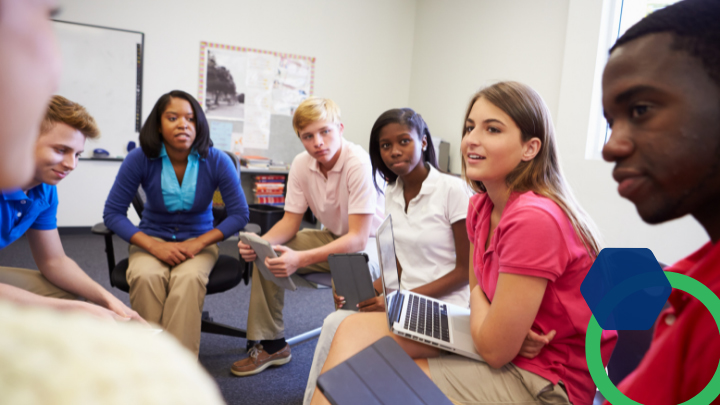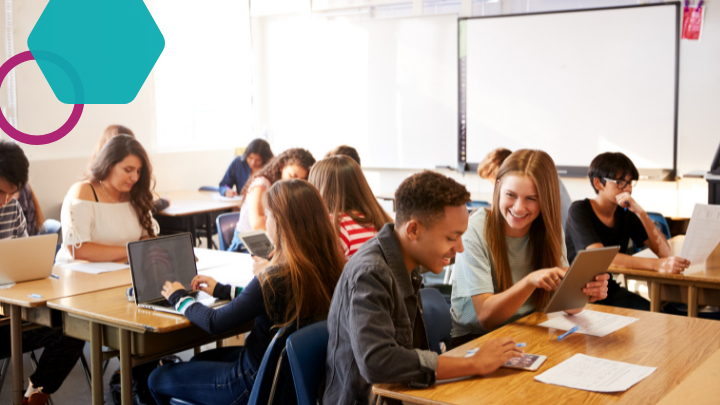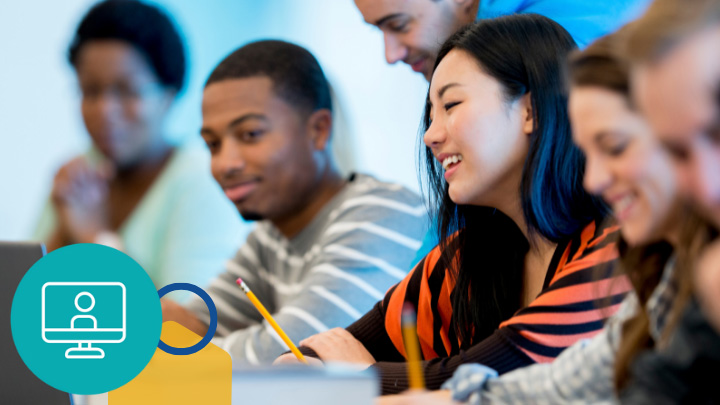This fall we are all — teachers, leaders, students, and families — dealing with trauma. And it can show up in intense and new ways. A teacher friend recently shared this anecdote: to celebrate 8th-grade graduation this year, she and her co-teacher delivered lawn signs to students’ homes and took pictures of students with their signs. One student was so scared of coronavirus that she sat in her upstairs window and cried while the teachers spoke to her mother outside. Her mother reported that her daughter had refused to leave the house since March.
As a classroom teacher, administrator, and BetterLesson coach, I have seen the effects of trauma play out for students, teachers, classrooms, and schools. Trauma is the emotional and physical response that occurs as a result of a distressing experience or repeated exposure to distressing experiences, such as Adverse Childhood Experiences (ACES) like physical or emotional abuse, neglect, caregiver mental illness, or household violence. Before the coronavirus pandemic, researchers estimated that trauma directly impacted up to two-thirds of school children.
In the midst of two public health crises—coronavirus and police brutality—we are seeing that number dramatically increase. Our students are witnessing both crises either personally or through the media: through videos portraying violence against communities of color and graphs with steadily rising coronavirus death rates. And they are all facing new routines and new expectations, whether in the classroom with social distancing guidelines or learning from home. For this reason, trauma-informed education is imperative for all. Although teachers cannot fully erase the impact of trauma (and mental health professionals, school leaders, and families play a crucial role), teachers can embed trauma-informed best practices in everything they do to buffer students from the effects of toxic stress. Here are five fundamental tenets, along with key strategies that can be implemented online, in person, or in a hybrid model.
Although teachers cannot fully erase the impact of trauma (and mental health professionals, school leaders, and families play a crucial role), teachers can embed trauma-informed best practices in everything they do to buffer students from the effects of toxic stress. Here are five fundamental tenets, along with key strategies that can be implemented online, in person, or in a hybrid model.
Build a classroom community.
Students who have faced trauma have difficulty with relationship-building and social awareness, so building a classroom community of trusted peers and adults can help support the child’s social development. Feeling comfortable within the classroom community and having a positive relationship with the teacher can contribute to lowering students’ heightened sense of stress and worry, allowing them to focus on learning.
Get to Know Students and What They Bring to the Classroom
“I wish my teacher knew” is a strategy that helps the teacher learn about the interests and preferences of individual students in their classroom. This can be especially important when trying to build relationships with students online because we don’t have the normal social touch-points we would have within a school building.
Help Students Develop Healthy Relationships with Each Other
Morning meetings provide the students and teacher a chance to connect with each other. Consider meeting to do a social-emotional check in or to reinforce an executive functioning skill, such as a weekly goal-setting routine. These can be done synchronously over video or even asynchronously through email, your LMS, or a shared video or discussion board like Flipgrid or Padlet.
Foster predictability and consistency.
In order to mitigate the effects of trauma on executive functioning, we can provide students with a predictable schedule and consistent expectations. This will allow students to anticipate what will come next in their day or week, decreasing the cognitive demand that comes with trying to figure out what’s expected. Predictability and consistency have another benefit in that they can provide a sense of calm during an otherwise hectic time.
Build and Stick to Clear Routines and Expectations Together
Creating and improving class rules and procedures with students gives students a voice in the organization and expectations of their virtual or physical space. It ensures that students are aware of and invested in the rules they will be held accountable for.
Allow for flexibility and student ownership.
While it may seem at odds with the tenet above, flexibility can allow students to build confidence through engaging in activities that match their interests and strengths. Giving students ownership of classroom rules and procedures has been shown to increase a student’s sense of control, which can decrease the level of stress they experience. Students’ ownership of their own learning can support them in building important executive functioning skills such as prioritizing and planning.
Engage in Goal Setting
Use a weekly goal setting and reflection routine to help students build executive functioning skills needed for academic independence: prioritization, self-assessment and reflection, task initiation.
Start Personalizing the Learning
Choice boards for student agency allow the teacher to provide students with options for how they learn and represent mastery of content. This is a great way to differentiate for both student interest and need.
Celebrate wins.
Students who have experienced trauma can develop a low self-image, anxiety, or depression; this can lead students to believe the worst about themselves and their abilities. It is important to counter this narrative by intentionally calling attention to the positive efforts and outcomes we see from students to help them build self-awareness and accurately evaluate their progress.
Celebrate!
Sharing positive news with families can help students build positive self-concept by highlighting student successes and can help you build positive relationships with important adults in their lives.
Provide student-centered resources.
Creating a strong classroom environment is an important support for students, but we know that it will not address all of the challenges students face as a result of trauma. We must provide student-centered resources to families and caregivers to augment school-based supports. Building a partnership with the family or caregiver of a student experiencing trauma is the first step. From there we can explicitly teach self-awareness and self-regulation strategies to students and connect them with resources within the community. This can help create a feeling of safety and stability because school, home, and community are aligned, and it can also help mitigate some of the manifestations of trauma by providing the students with alternative ways of recognizing and coping with their emotions. We can provide student-centered resources online—in a hybrid model or in-person.
Teach Self-Awareness and Self-Regulation Strategies
Self-regulation strategies teach students how to identify and address their emotions and resulting actions.
Provide Information about Community Resources
Consider developing a list of resources. Check into your district’s website, they might already have a printable list of community resources for families.
It can feel overwhelming to think through these ideas as we’re already attempting to completely revise our lessons and methods and are experiencing these two crises ourselves. As a coach, I help teachers take small but meaningful steps by supporting them in identifying what’s most important to them, trying that one thing, observing the results, and continuing to iterate. This is the “try-measure-learn” method. It requires us to be flexible and to commit to growth. Your students will learn from your model of self-compassion, experimentation, and continuous improvement.







